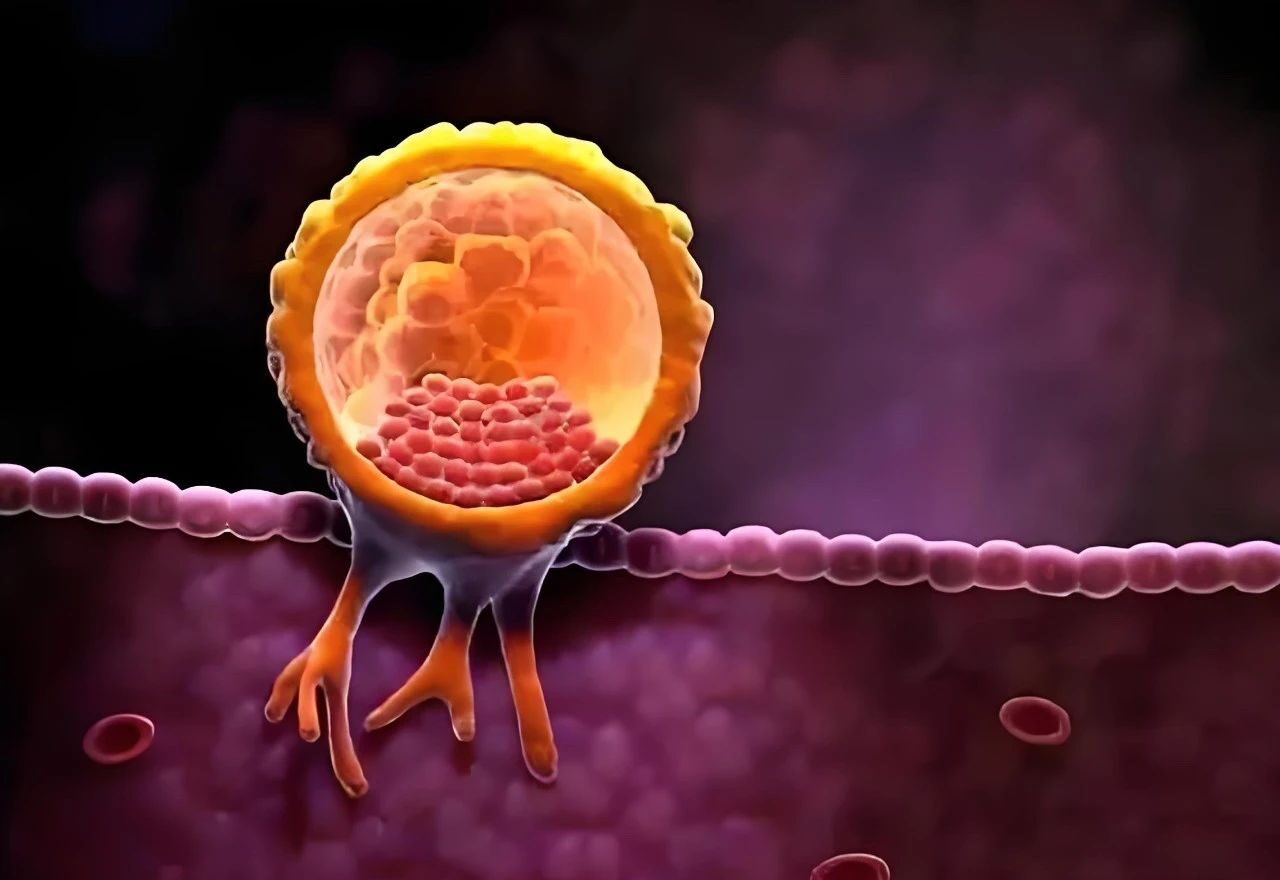Cracking the IVF sac-feeding failure: three core factors and global solutions
In the journey of assisted reproduction, sac failure is like a frost on a carefully nurtured garden – embryos that should be thriving come to a halt in the glassware of the lab. According to the International Society for Reproductive Medicine (ISRM), approximately 35% of IVF cycles worldwide are lost due to sac failure. This article combines multinational research findings with clinical wisdom to reveal the underlying mechanisms of sac-raising failure and provide scientific coping strategies.

The first puzzle: Why did the mitochondria, the “energy engine” of the embryo, turn off?
Mitochondria are known as the “power station” of the cell, and their function directly affects the developmental potential of the embryo. A 2023 study by the Harvard Fertility Center found that the amount of mitochondrial DNA in embryos with failed sacs was 47% lower than in successful embryos.
The Triple Alarm of the Mitochondrial Crisis
Energy deficit: each egg carries 100,000-500,000 mitochondria, and the number of mitochondria in older women has plummeted to less than 50,000
Accumulation of mutations: 62% of mitochondrial DNA mutations are found in women over 35 years of age.
Distributional abnormality: mitochondria are three times more likely to fail to aggregate at the perinuclear level in embryos with developmental delays.
Case Insights
After three failed attempts at raising blastocysts, Emma (Emma, 39) from the Fertility Center in Berlin, Germany, was able to achieve four high-quality blastocysts with a mitochondria-targeting regimen (coenzyme Q10 + alpha-lipoic acid + intermittent fasting). “It was like putting new batteries in the cells.” Her attending physician, Dr. Michael Schneider, explained.
The second puzzle: Sperm quality – the neglected “invisible killer”
Traditionally, sperm contribute only 50 percent of the genetic material. However, recent studies have shown that sperm quality has a direct impact on the epigenetic and developmental rhythms of the embryo.
Sperm DNA fragmentation: a time bomb for the embryo
Threshold alert: a 58% decrease in sac-raising success at DNA fragmentation rates (DFI) > 27
Developmental delay: for every 1% increase in fragmentation rate, the embryo reaches the blastocyst stage with a delay of 2.3 hours
Repair mechanism breakdown: damaged sperm overload egg repair by 300%
Global Intervention Strategy
| country | innovative treatment | Success rate increase |
|---|---|---|
| Japanese | Microfluidic sperm sorting technology | +41% |
| Palestine | Magnetic Activated Cell Sorting (MACS) | +35% |
| Canadian | Antioxidant Cocktail Therapy | +28% |
Mystery #3: Culture fluid – is the lab’s “uterus simulator” accurate?
Embryo culture fluid is the “soup of life” for in vitro development, and differences in its composition can lead to vastly different outcomes. The European Society for Reproduction and Embryology (ESHRE) compared 12 commercially available culture fluids and found that blastocyst formation rates varied by up to 39%.
Key Component Breakthroughs
GM-CSF Revolution: Blastocyst formation jumped from 30% to 76% with the addition of 2 ng/ml granulocyte colony-stimulating factor.
Mitochondrial Nutrients: Pyruvate + Glutamine combination increases embryonic ATP production by 2.8 times
Oxygen Paradox: 5% hypoxic environment closer to tubal conditions, 22% increase in quality blastocyst rate
Laboratory variable control
Temperature fluctuation: ±0.2°C deviation can stagnate embryo development
Micromanipulation: 18%-25% fluctuation in outcome due to differences in embryologist experience
Time Window: Blastocyst transfer at 110-115 hours after fertilization for optimal implantation rates
Global Combination Therapy Program: Optimization from cellular to systemic level
Female Mitochondrial Activation Program
Nutritional Intervention:
Coenzyme Q10 600mg/day + Vitamin D 5000IU/day
Omega-3 fatty acids (EPA 1000mg + DHA 500mg)
Lifestyle Reset:
Nighttime red light therapy (830nm wavelength) to elevate mitochondrial membrane potential
Hyperbaric Oxygen Therapy (1.3 ATA, 30 min/session)
Male Sperm Repair Strategies
Antioxidant Triple Therapy:
Vitamin C 2000mg + Vitamin E 400IU + Selenium 200μg
Cold therapy techniques:
Testicular cryoprotection device (used daily for 6 hours for 3 months)
Embryology Laboratory Quality Control Standards
Dynamic monitoring system: AI algorithm adjusts culture solution composition in real time
Vibration isolation technology: control environmental vibration below 0.1μm
Embryo metabolomics: analyzing embryo potential through culture fluid residues
Multinational Case Study
Case 1: The Miracle of Mitochondrial Transplantation
Maria (42) from Barcelona, Spain, after five failed attempts at saccarification, underwent oocyte mitochondrial transplantation (MRT technique), in which she injected mitochondria from a young donor into her own eggs, resulting in three high-quality blastocysts.
Case 2: Sperm fragmentation reversal
James (45), an engineer from Silicon Valley, USA, had an initial DFI of 39%. After three months of comprehensive treatment (antioxidants + testicular cold therapy + lifestyle intervention), the DFI was reduced to 15% and the number of vesicles raised in his wife’s cycle increased from 0 to 5.
Preparation for 90 days prior to conception
Complete semen analysis + sperm DNA fragmentation testing
Test for mitochondrial DNA copy number (special lab required)
Start mitochondrial nutrient supplementation program
Laboratory Selection Criteria
Ask for industry data on blastocyst formation rate (international standard ≥60%)
Confirm that culture fluid contains key ingredients such as GM-CSF
Examine embryologist certification credentials (ESHRE certification is the gold standard)
Mid-cycle monitoring indicators
Embryo cell count 72 hours after fertilization (ideally ≥8 cells)
Blastocyst formation time window (D5 preferred to D6)
Trophoblast cell homogeneity score (TE grade A is superior)
Life lessons
Failed blastocyst formation is not an end point, but an opportunity to reconceptualize life. From the microscopic world of mitochondria to the precision control of the laboratory, modern reproductive medicine is unraveling the layers of the origin of life. As Nobel Laureate Elizabeth Blackburn said, “Every embryo tells the most exquisite story of the universe.” On this path of discovery, science and hope will always walk together.
相关推荐
- 5 Taboos After Embryo Transfer: International Reproductive Experts Guard Surrogate Mothers During Critical Period of Landing
- How does non-invasive technology select the “Chosen One” for IVF?
- IVF Success Rates for 40+ Women
- Kyrgyzstan IVF Guide for Singles
- Breaking the invisible code of repeated IVF transfer failures
Search within the site
Surrogacy News
Hot Tags.
Kyrgyzstan Surrogacy Agency,Global IVF Hospitals,International Surrogate Mother Recruitment